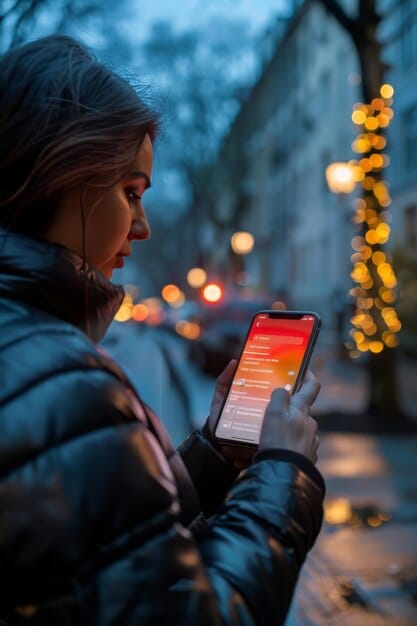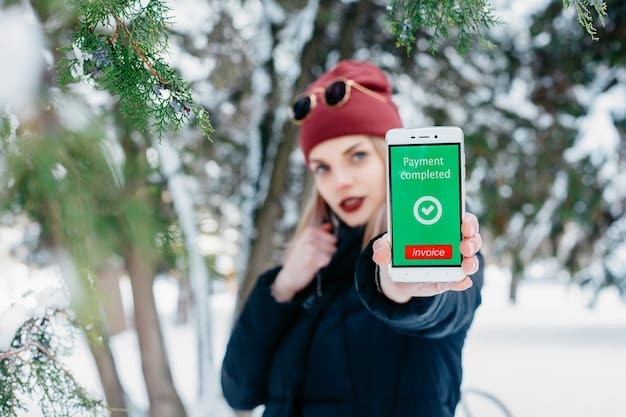Master WhatsApp Privacy: 3 Settings to Protect Your Data

WhatsApp users can enhance their privacy by mastering three key settings: profile photo visibility, last seen status control, and group invitation preferences, empowering them to manage their data and interactions effectively.
Are you concerned about your privacy on WhatsApp? With billions of users worldwide, it’s essential to understand how to protect your personal information. Let’s explore three crucial privacy settings that will give you greater control over your data and enhance your overall WhatsApp experience.
WhatsApp Privacy Settings: Your Shield Against Data Intrusion
WhatsApp is a popular messaging app, but its default privacy settings may not offer the level of protection you desire. Adjusting these settings is crucial to safeguarding your personal information and controlling who can see your profile details and activity status. Let’s dive in!
Understanding Default Privacy Settings
WhatsApp’s default settings allow anyone with your phone number to see your profile picture, last seen status, and about information. This might be acceptable for some, but if you value your privacy, it’s time to make some changes. Understanding what these defaults expose is the first step toward securing your account.
Why Privacy Matters on WhatsApp
Privacy on WhatsApp isn’t just about hiding information; it’s about controlling your digital footprint. By adjusting your settings, you can prevent unwanted contacts from accessing your data, reduce the risk of phishing attempts, and maintain a sense of security while using the app. This control empowers you to have a safer and more personalized experience.

- Control your Visibility: Limit who can see your profile information.
- Reduce Unwanted Contact: Prevent strangers from accessing your details.
- Enhance Security: Minimize the risk of phishing and scams.
By taking control of your WhatsApp privacy settings, you can significantly reduce your digital exposure and enjoy a safer messaging experience. These adjustments are simple to make and can provide a substantial boost to your overall security and peace of mind. Being proactive about your privacy helps you maintain control over your digital identity and interactions.
Mastering Your Profile Photo Visibility
Your profile photo is often the first thing people see when they interact with you on WhatsApp. Controlling who can view it is a key aspect of managing your privacy. Let’s explore how to customize this setting to suit your personal preferences.
Steps to Adjust Profile Photo Visibility
To change your profile photo visibility, navigate to your WhatsApp settings, then select “Privacy” and “Profile Photo.” You will see options to allow “Everyone,” “My Contacts,” or “Nobody” to view your photo. Choose the option that best aligns with your privacy needs.
The Implications of Each Setting
Selecting “Everyone” means that anyone with your phone number, even those not in your contacts, can see your photo. “My Contacts” restricts visibility to only the people saved in your address book. “Nobody” ensures that your profile photo is hidden from everyone, providing the highest level of privacy but potentially making it harder for contacts to identify you.
Best Practices for Profile Photo Privacy
For increased privacy, “My Contacts” is generally the best option, balancing visibility with a degree of control. However, review your contacts regularly to ensure that you only include people you trust. Consider choosing “Nobody” if you prefer maximum privacy and don’t mind sacrificing recognizability. Regularly updating your privacy settings helps you keep up with your changing social circles and preferences.
Controlling Your Last Seen Status
The “Last Seen” status indicates the last time you were active on WhatsApp. Many users find sharing this information convenient, but it can also be a privacy concern. Let’s explore how to manage this setting to protect your activity status.
How to Modify Your Last Seen Settings
To adjust your “Last Seen” settings, go to WhatsApp settings, then “Privacy” and “Last Seen.” Similar to the profile photo settings, you can choose “Everyone,” “My Contacts,” or “Nobody.” Select the option that best matches your comfort level with sharing your activity status.
Understanding the Trade-Offs
If you choose “Everyone,” anyone can see when you were last online. “My Contacts” limits this information to your saved contacts. “Nobody” hides your last seen status from everyone, but it also means you won’t be able to see others’ last seen statuses. This setting offers privacy at the cost of reciprocity.
- Consider Reciprocity: Hiding your status means you can’t see others’.
- Evaluate Your Needs: Decide if the privacy is worth the trade-off.
- Regularly Review Settings: Update as your preferences change.
Managing your “Last Seen” status is about finding the right balance between privacy and functionality. Think about who you want to share this information with and adjust your settings accordingly. Regularly reviewing this setting ensures it aligns with your current privacy priorities.
Managing Group Invitation Preferences
WhatsApp groups can be a great way to stay connected, but receiving unwanted group invitations can be annoying and potentially expose you to unwanted content. Let’s explore how to manage your group invitation preferences to maintain control over your group participation.
Steps to Customize Group Invitation Settings
To manage your group invitation settings, go to WhatsApp settings, then “Privacy” and “Groups.” Here, you can choose who can add you to groups: “Everyone,” “My Contacts,” or “My Contacts Except…” The “My Contacts Except…” option allows you to block specific contacts from adding you to groups.
The Benefits of Limiting Group Invitations
Choosing “My Contacts” prevents strangers from adding you to random groups, reducing spam and potential exposure to scams. “My Contacts Except…” provides an even greater level of control by letting you block specific contacts who might add you to irrelevant or unwanted groups. Limiting group invitations helps maintain a more controlled and relevant WhatsApp experience.
Strategies for Effective Group Management
When using the “My Contacts Except…” option, consider blocking contacts who frequently add you to groups without your permission or who share content you find inappropriate. Regularly reviewing your blocked list ensures that your preferences remain aligned with your current relationships and interests. Effective group management contributes to a more positive and productive WhatsApp experience.
| Key Point | Brief Description |
|---|---|
| 📸 Profile Photo Visibility | Control who sees your profile picture: Everyone, My Contacts, or Nobody. |
| 🕒 Last Seen Status | Manage who can see when you were last active: Everyone, My Contacts, or Nobody. |
| 👥 Group Invitations | Limit who can add you to groups: Everyone, My Contacts, or My Contacts Except… |
| 🛡️ Overall Data Protection | Adjusting these settings enhances your privacy and reduces unwanted contact. |
Frequently Asked Questions
To access privacy settings on WhatsApp, go to Settings > Privacy. Here, you’ll find options to manage different aspects of your privacy, including who can see your profile photo, last seen status, and more.
“My Contacts Except…” allows you to exclude specific contacts from being able to add you to groups. It gives you greater control over which contacts can invite you, preventing unwanted group additions.
No, if you hide your last seen status by selecting “Nobody,” you also won’t be able to see the last seen status of your contacts. This is a reciprocal privacy setting on WhatsApp.
It’s a good practice to review your privacy settings every few months or whenever WhatsApp releases an update. This ensures that your settings align with your current privacy preferences and any new features or options.
Yes, WhatsApp allows you to block specific contacts from seeing your status updates. To do this, go to Status Privacy settings and select “Only share with…” or “My contacts except…” to customize who can view your status.
Conclusion
By mastering these three privacy settings on WhatsApp – profile photo visibility, last seen status control, and group invitation preferences – you can significantly enhance your data protection and enjoy a more secure and personalized messaging experience. Take the time to adjust these settings to align with your personal privacy needs and preferences.





